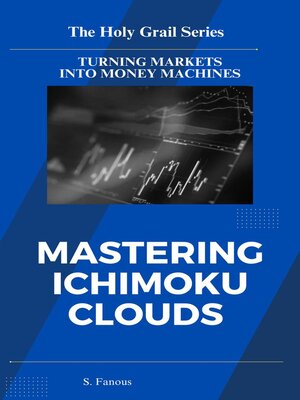
Sign up to save your library
With an OverDrive account, you can save your favorite libraries for at-a-glance information about availability. Find out more about OverDrive accounts.
Find this title in Libby, the library reading app by OverDrive.



Search for a digital library with this title
Title found at these libraries:
| Library Name | Distance |
|---|---|
| Loading... |
Summary of "Mastering Ichimoku Clouds for Market Analysis"
Fundamental Assumptions in Technical Analysis
The Market Discounts Everything: This principle suggests that all available information, including news, earnings reports, and other data, is already reflected in the price of a security.
Prices Move in Trends: According to this assumption, prices tend to move in observable trends, either upward, downward, or sideways.
History Tends to Repeat Itself: This assumption is based on the idea that human behavior is consistent over time. As a result, historical price patterns tend to repeat, making it possible to predict future movements based on the past.
Origins of Ichimoku Clouds
Components of the Ichimoku Cloud System
Tenkan-sen (Conversion Line): The Tenkan-sen is calculated by averaging the highest high and the lowest low over the past nine periods. It indicates short-term price momentum.
Kijun-sen (Base Line): The Kijun-sen is calculated by averaging the highest high and the lowest low over the past 26 periods. It serves as an indicator of medium-term momentum and potential support/resistance levels.
Senkou Span A (Leading Span A): This line is calculated by averaging the Tenkan-sen and Kijun-sen, plotted 26 periods ahead. It forms one boundary of the Kumo.
Senkou Span B (Leading Span B): Calculated by averaging the highest high and lowest low over the past 52 periods and plotted 26 periods ahead, it forms the other boundary of the Kumo.
Chikou Span (Lagging Span): This is the current closing price plotted 26 periods back. It helps confirm trends when compared to past prices.
Kumo (Cloud): The area between Senkou Span A and B, representing support and resistance levels. The Kumo's thickness indicates market volatility.
Comprehensive Analysis of Ichimoku Clouds
Chart Setup and Timeframe Selection Setting up Ichimoku Clouds involves selecting appropriate chart timeframes based on trading style (e.g., daily charts for long-term analysis, hourly charts for short-term trading) and ensuring all Ichimoku components are correctly plotted.
A concise review of the key principles and components of the Ichimoku system, emphasizing their interrelated functions and collective utility in market analysis.
Suggested Indicators to Combine with Ichimoku Clouds
Relative Strength Index (RSI): RSI helps confirm trend strength and identify overbought/oversold conditions.
Moving Average Convergence Divergence (MACD): MACD is used to confirm trend direction.
Stochastic Momentum Index (SMI): SMI refines momentum indicators to spot entry and exit points.
Bollinger Bands: Bollinger Bands help identify breakout points and gauge volatility.
Multiple Timeframe Analysis
Trend Following Strategies
Reversal Strategies







